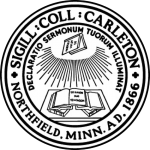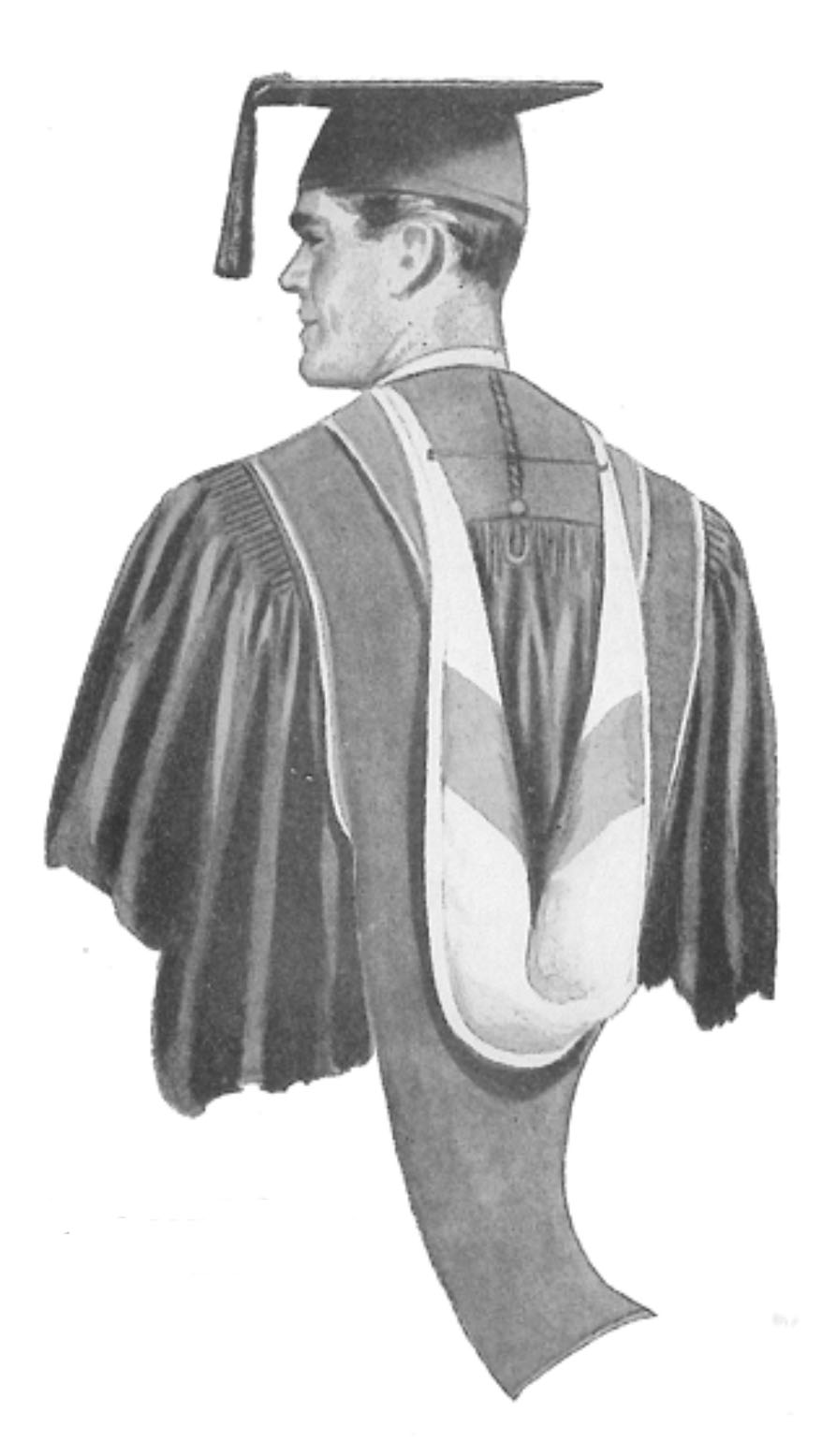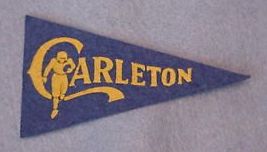Carleton College
Minnesota
1866





Carleton College students selected a golden yellow shade of “maize” as their college’s color in 1889 because it resembled the gold in the Carleton coat of arms. Blue began to be used as a second college color in the early 1900s and was officially adopted in 1911. The shade of blue was often described as “Yale blue” or “royal blue”, both of which refer to a deep blue shade, the latter with a slight purple tint.

Citations in the World Almanac (listed by cover date; color information is from the previous year): maize (1895-1904); maize/Yale blue (1908-1912); maize/blue (1914); maize/Yale blue (1915-1931); maize/blue (1934-1935)
Academic hood lists published by the Intercollegiate Bureau of Academic Costume (IBAC) in 1927, 1948, and 1972 described Carlton College as having a hood lined maize with a Yale blue chevron. “Maize” was a synonym the IBAC used for golden yellow and “Yale blue” was how the IBAC described a dark shade of blue. A list compiled by Kevin Sheard in Academic Heraldry in America (1962) described the college’s hood lining as maize with a royal blue chevron – a description repeated in a 1969 IBAC list.
To avoid confusion with the hood lining already assigned to Roanoke College around 1899 (Mandarin yellow with a national blue chevron), here Carleton’s chevron is royal blue, which is one of the ways the college has described the shade of its dark blue over the years.